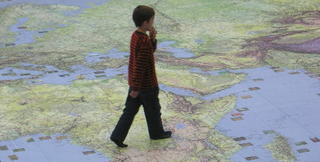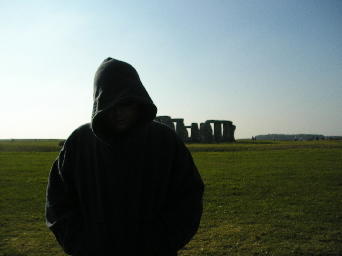St. Albans
One interesting thing about travelling in England is that it is much easier to travel north and south than to travel east and west. So, even though St. Albans and Stevenage are both north of London, the easiest way to get there was to take the train south to London, walk across the street to a different train station and then head north.
St. Albans was first settled by the Romans in AD 43 as the town of Verularium and has been going strong ever since. Whether for its remarkable blend of Tudor and Georgian architecture, its fascinating Roman museum, or its charming cathedral, visitors to this city will certainly find when they are looking for. Perhaps, however, the first place to find what you are looking for is the St. Albans market. First established more than 1000 years ago, the market is an eclectic mix of necessary equipment and charming kitsch. (And this ends my brief attempt to write a brief guide book description of the St. Albans.)
Upon arriving in St. Albans, we headed to the market. Actually, we were heading to the Tourist Information Centre, but we had to wade through the market first. The market stretches for several blocks and has just about anything you could want to buy, including fruits and vegetables, custom-made curtains, faux-fur pillows, and those rubber wrist bands that are so popular nowadays.
After lunch in a local pub, we headed towards the cathedral. Unfortunately, we headed the wrong way and ended up at another church instead. After turning the correct way, we stopped at the St. Albans Museum. Since we were expecting a small jumble of things pulled from Mrs. Figg’s attic a few weeks before, we were pleasantly surprised to see a well-researched, well-displayed presentation of history from the earliest Roman occupants up through the inhabitants of today.
Now, he headed towards the cathedral. Really. And this time, we got there. I had always thought that cathedrals had drab stone walls but evidently they were painted with colourful pictures. The St. Albans cathedral still has paintings and colourful decorations. It also has a remarkable stone screen that has been restored to its original state. We stayed for Evensong sung by the cathedral’s choir, including this hymn.
After Evensong, we walked a bit more and saw the remains of the Roman walls. (I feel like I should write a bit more about that, but…well…it was a wall…with a hole in it…a really old wall…with a really old hole…but maybe the hole isn’t that old…but the wall is.)
St. Albans was first settled by the Romans in AD 43 as the town of Verularium and has been going strong ever since. Whether for its remarkable blend of Tudor and Georgian architecture, its fascinating Roman museum, or its charming cathedral, visitors to this city will certainly find when they are looking for. Perhaps, however, the first place to find what you are looking for is the St. Albans market. First established more than 1000 years ago, the market is an eclectic mix of necessary equipment and charming kitsch. (And this ends my brief attempt to write a brief guide book description of the St. Albans.)
Upon arriving in St. Albans, we headed to the market. Actually, we were heading to the Tourist Information Centre, but we had to wade through the market first. The market stretches for several blocks and has just about anything you could want to buy, including fruits and vegetables, custom-made curtains, faux-fur pillows, and those rubber wrist bands that are so popular nowadays.
After lunch in a local pub, we headed towards the cathedral. Unfortunately, we headed the wrong way and ended up at another church instead. After turning the correct way, we stopped at the St. Albans Museum. Since we were expecting a small jumble of things pulled from Mrs. Figg’s attic a few weeks before, we were pleasantly surprised to see a well-researched, well-displayed presentation of history from the earliest Roman occupants up through the inhabitants of today.
Now, he headed towards the cathedral. Really. And this time, we got there. I had always thought that cathedrals had drab stone walls but evidently they were painted with colourful pictures. The St. Albans cathedral still has paintings and colourful decorations. It also has a remarkable stone screen that has been restored to its original state. We stayed for Evensong sung by the cathedral’s choir, including this hymn.
After Evensong, we walked a bit more and saw the remains of the Roman walls. (I feel like I should write a bit more about that, but…well…it was a wall…with a hole in it…a really old wall…with a really old hole…but maybe the hole isn’t that old…but the wall is.)





0 Comments:
Post a Comment
<< Home